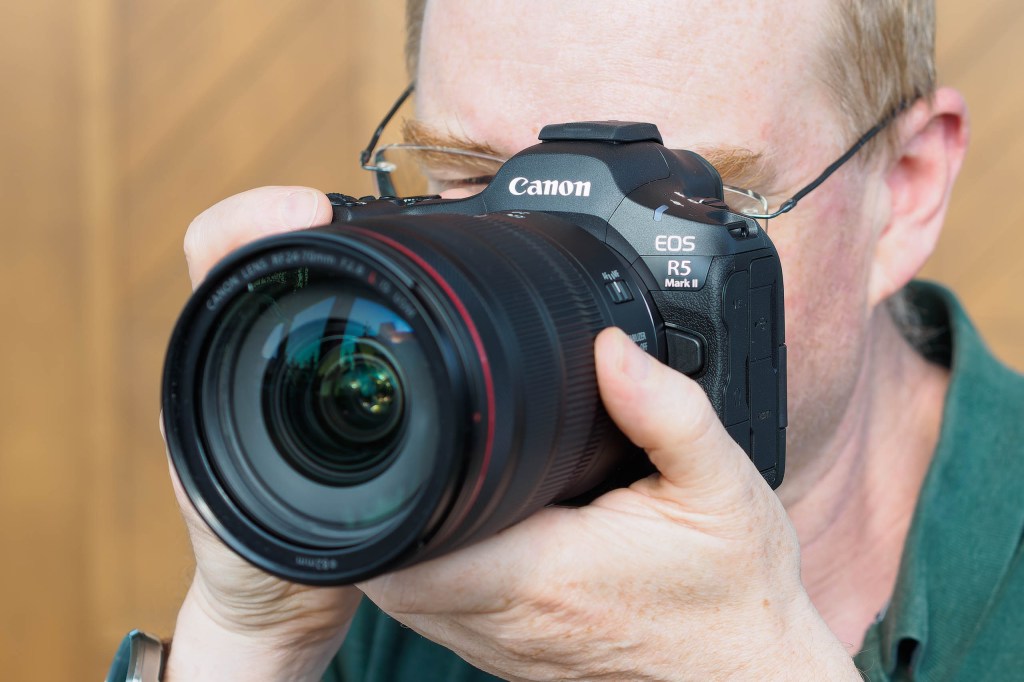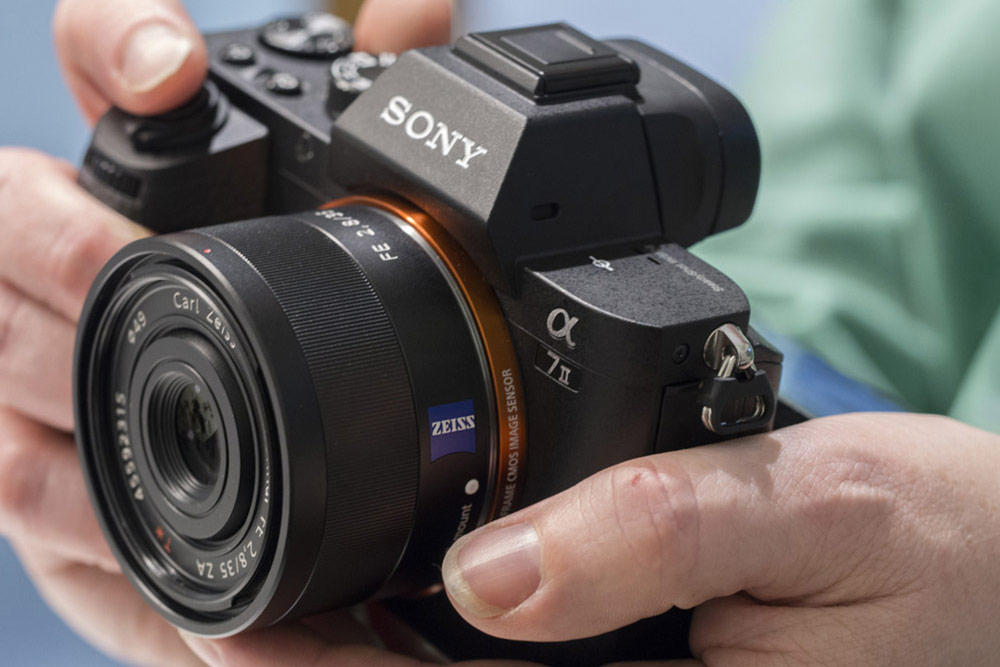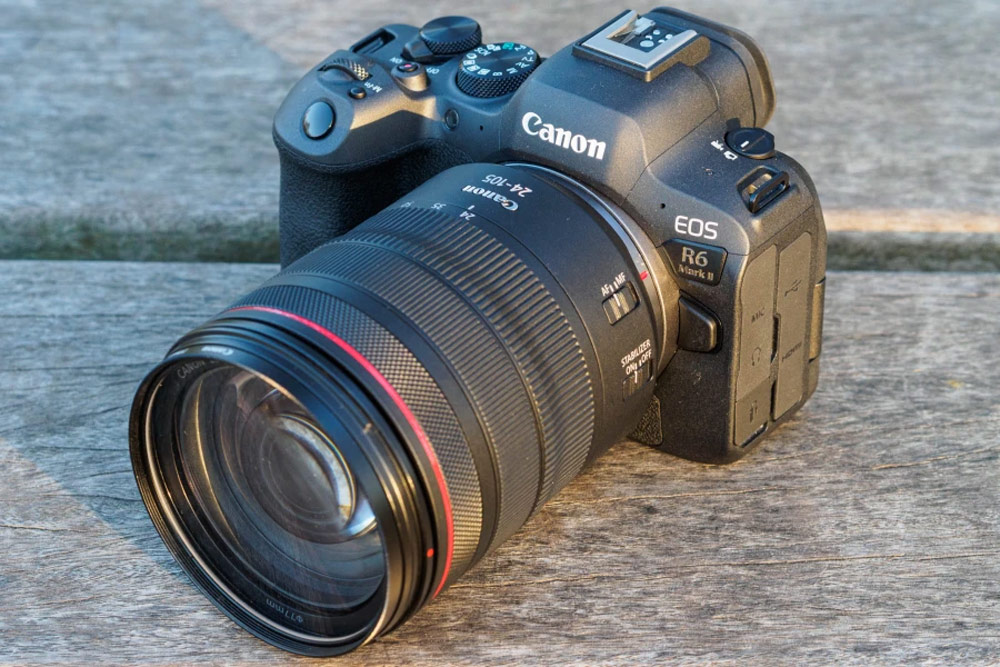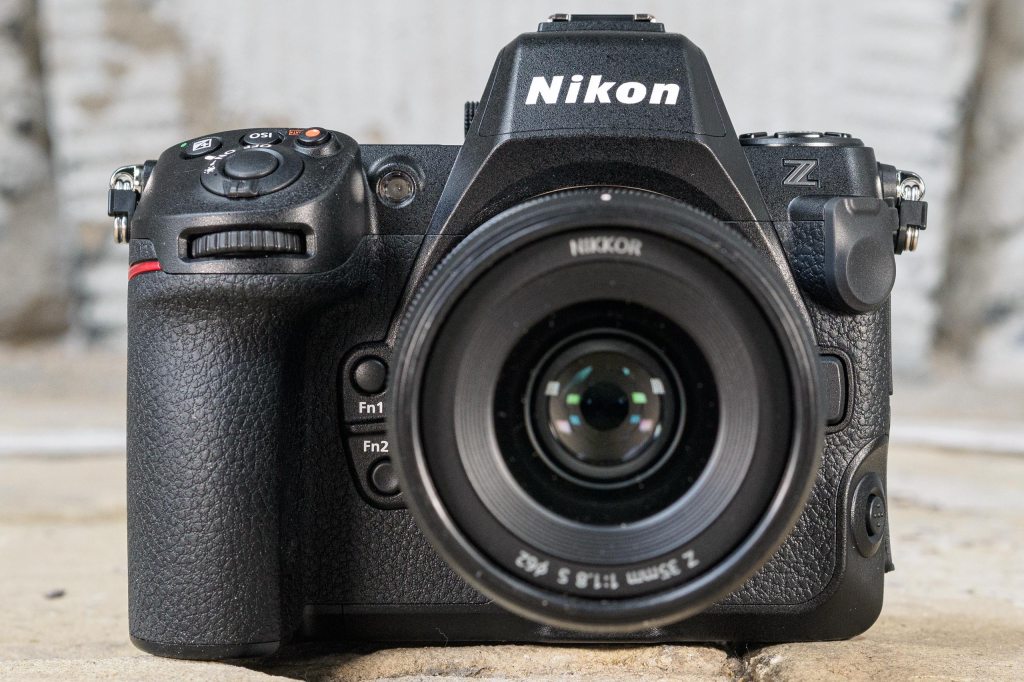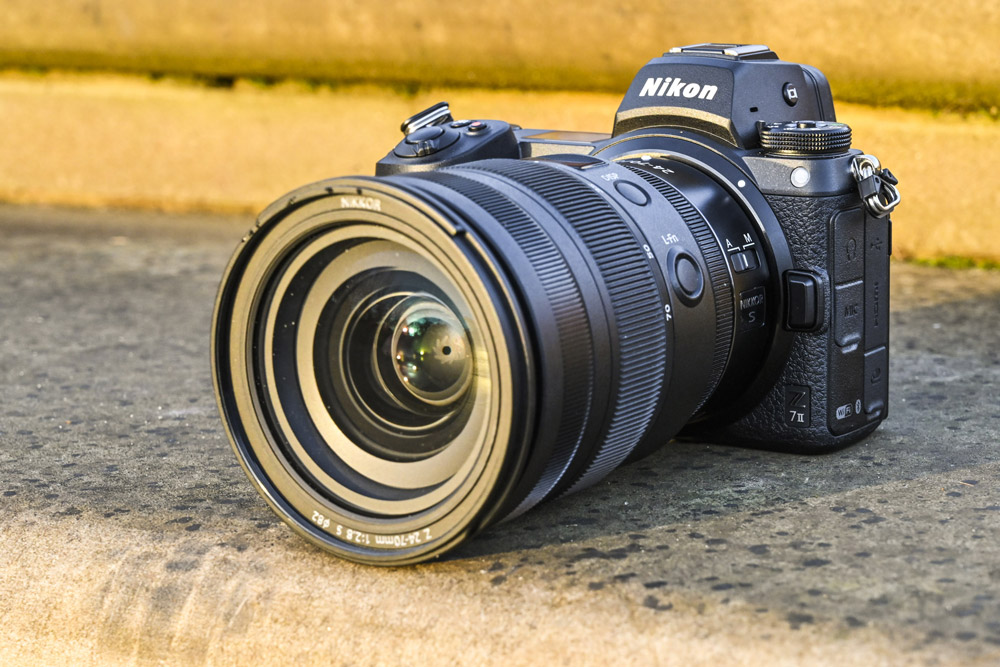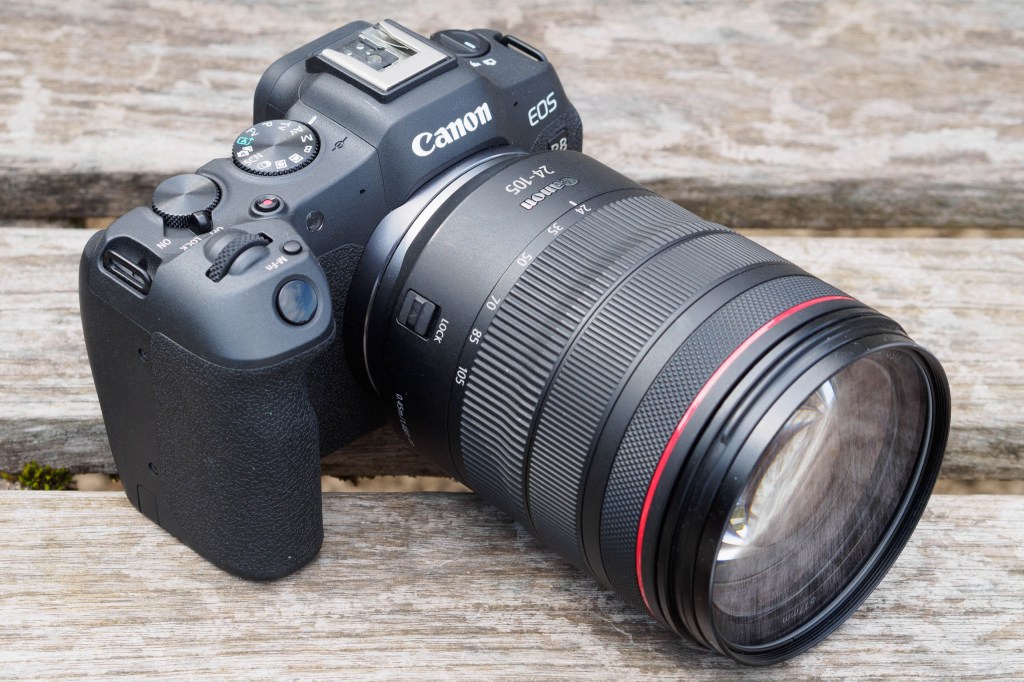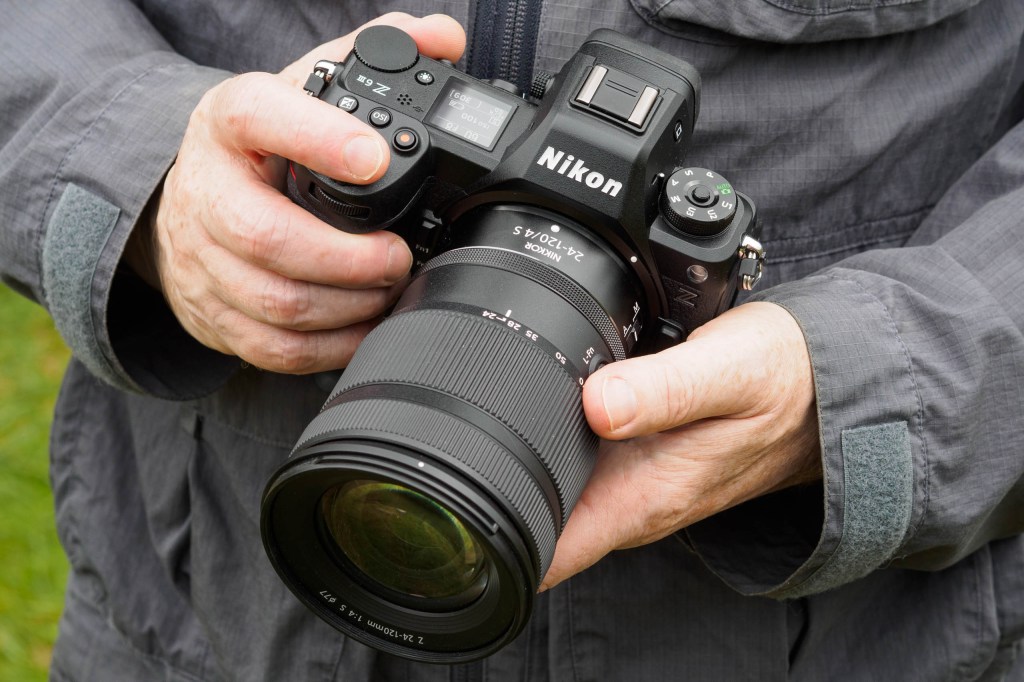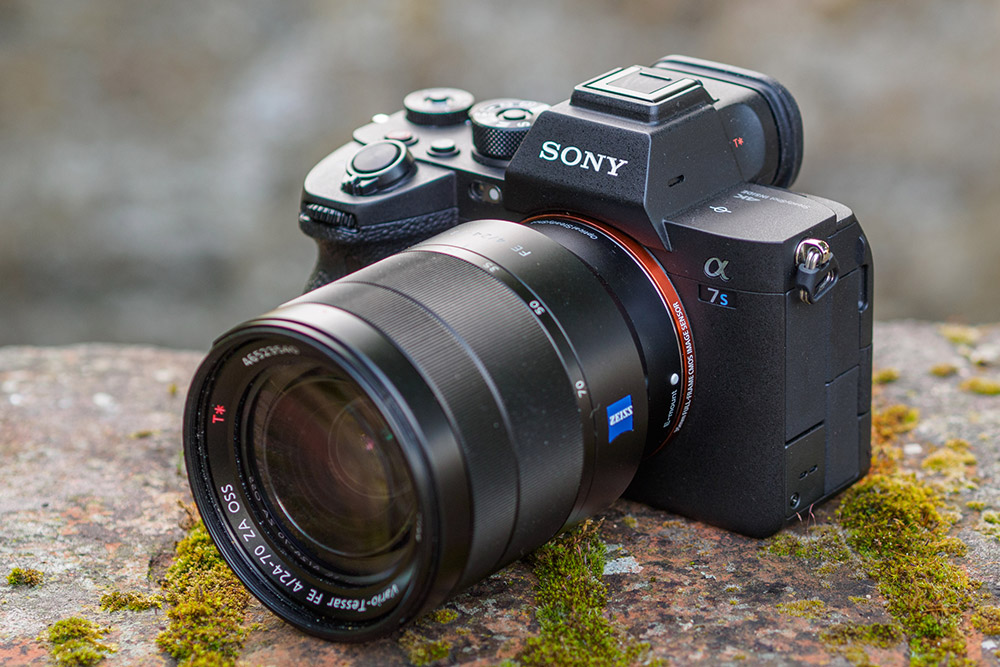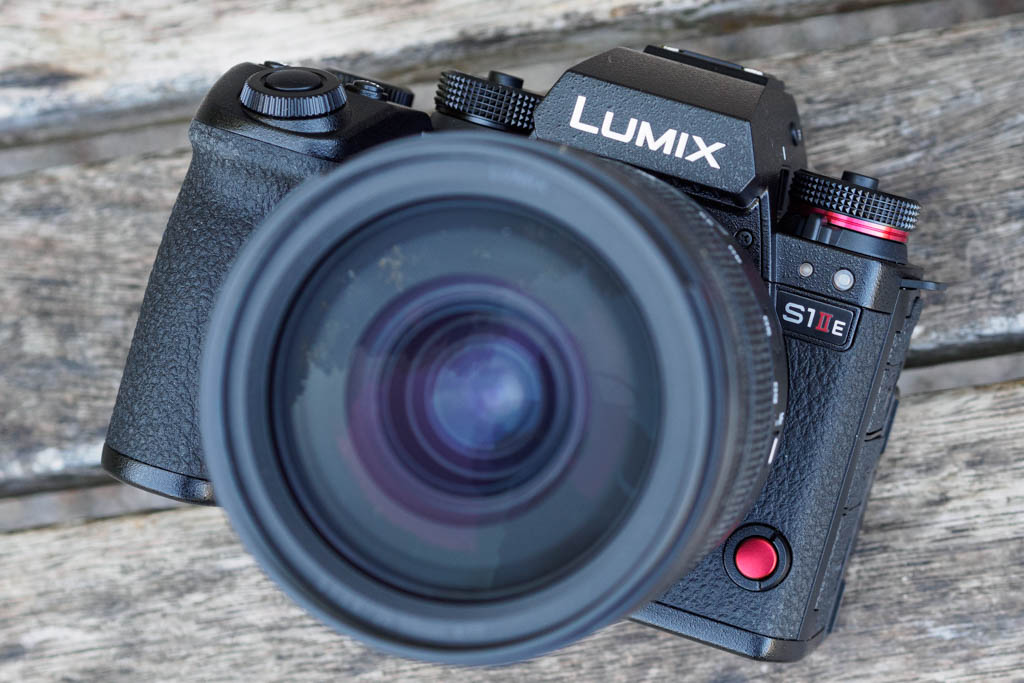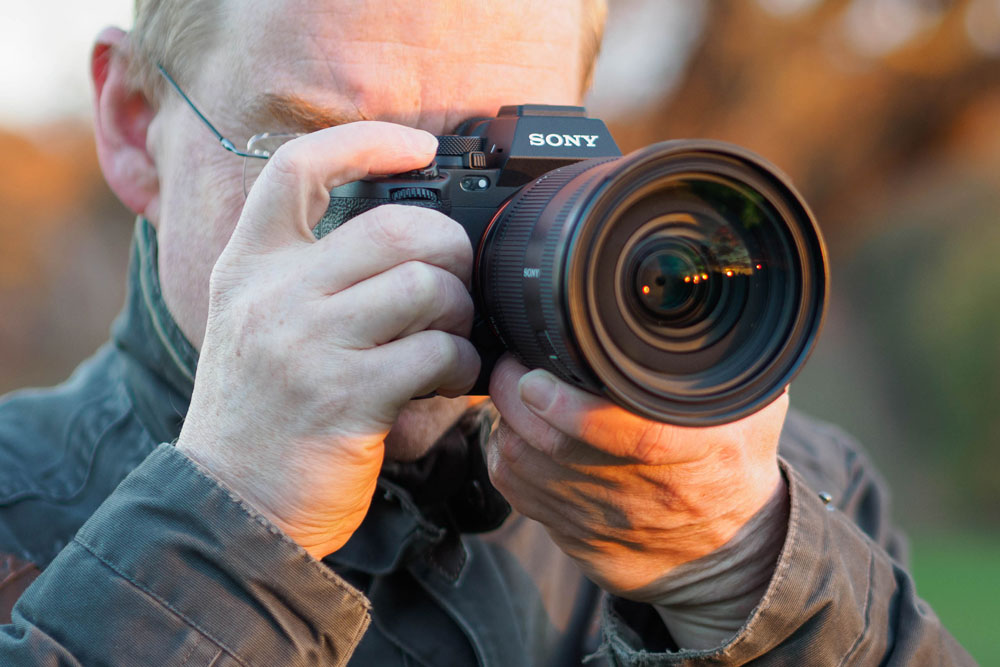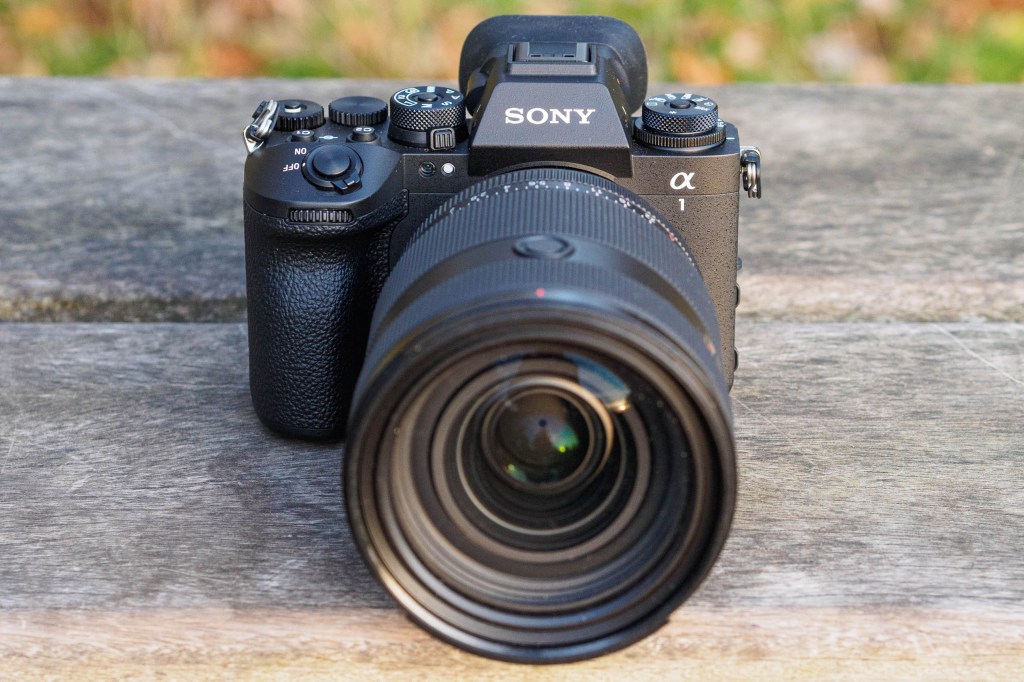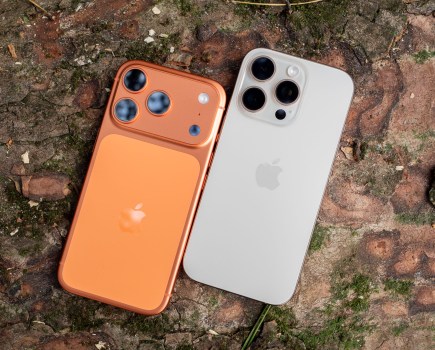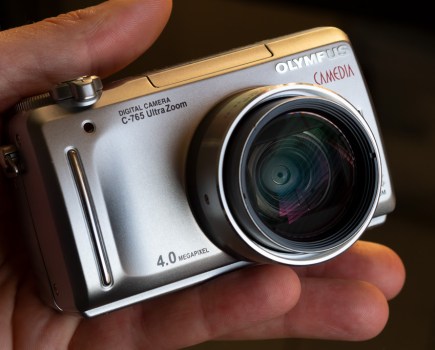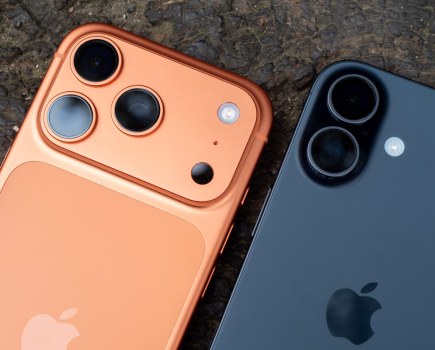The best full-frame mirrorless cameras represent the pinnacle of image-making technology right now. For many major manufacturers, their full-frame mirrorless systems are their flagships, for professionals and enthusiasts alike, and all of them offer a broad range of cameras to suit different needs. Whether you’re a beginner or an expert, I’m confident that you could find a great full-frame mirrorless camera in this guide that’d be perfect for what you want to shoot.
And don’t worry, I haven’t just assembled a list of all the most expensive models. Cost is a big consideration for all of us, and while full-frame mirrorless cameras definitely can be expensive, they don’t have to be. I’ve made sure to stock this list with budget options as well as premium, high-end professional cameras. Often, going budget means going second-hand, so you may also want to check out our guide to the best cheap full frame cameras, where there are some real bargains.
I keep this guide regularly updated, so new standout cameras like Canon’s pro flagship EOS R5 Mark II or Panasonic’s capable hybrid Lumix SIIE have made it onto this list, in addition to older cameras that I think still represent exceptional value for money.
Here’s a list of our picks of the best full frame mirrorless cameras available, with quick links to the best prices:
- Best full frame camera for professionals: Canon EOS R5 Mark II – Buy now
- Best full frame camera under $1,000 / £1,000: Sony A7 II – Buy now
- Best full frame camera for all-round use: Canon EOS R6 Mark II – Buy now
- Best full frame mirrorless camera for wildlife: Nikon Z8 – Buy now
- Best full frame camera for enthusiast photographers: Nikon Z7 II – Buy now
- Best full frame mirrorless camera for beginners: Canon EOS R8 – Buy now
- Best full frame camera for weddings and events: Nikon Z6 III – Buy now
- Best full frame mirrorless camera for video: Sony A7S III – Buy now
- Best hybrid full frame for photo and video: Panasonic Lumix S1IIE – Buy now
- Best full frame mirrorless camera for landscapes: Sony A7R V – Buy now
- Best full frame mirrorless camera for sports: Canon EOS R1 – Buy now
- Best full frame Sony camera for professionals: Sony A1 II – Buy now
Looking for the best deal on full frame mirrorless cameras? Not only will you find the best full frame mirrorless cameras, but also some of the best full frame camera deals, as our ‘Buy now’ buttons are setup to automatically take you to the best prices from trusted retailers. There is also a list of other retailers below each camera, so you can find the right deal for you.
Why you can trust Amateur Photographer
We spend many hours testing every product we recommend, in detail, in a variety of situations and shooting scenarios, and only use experts for our reviews, so you can be sure that you’re getting the best products. Find out more about our expert writers.
Best for pros
Best full frame mirrorless camera for professionals: Canon EOS R5 Mark II
Amateur Photographer verdict
The best professional all-rounder mirrorless camera on the market? Quite possibly – Canon has played a blinder here, fixing the overheating issues from the original R5 and adding next-gen features.- Exceptional autofocus – Eye Control AND Subject Detection
- Excellent handling and control layout
- Superb image quality in JPEG and RAW
- Won’t use some third-party LP-E6 batteries
- Eye control may not work well for everyone
- Inevitably expensive
Specifications at a glance:
| Sensor | 45MP sensor |
| Continuous shooting | 30fps burst mode shooting (electronic shutter) |
| Autofocus | Eye Control Focus technology, |
| ISO | ISO 100 to 51,200 |
| Image stabilisation | Up to 8.5 stops |
| Video | 8K 60fps internal raw video recording |
The top of the mirrorless camera market is a competitive place – but Canon may just reign supreme with the superb, intelligent, class-leading EOS R5 Mark II. It’s our favourite Canon, anyway, and best for portraits among our ultimate photography cameras.
The original EOS R5 felt like a big step forward, offering world-class stills performance and high-res 8K video. However, it was hobbled by its much-publicised overheating issues, which curtailed recording times. Fixing this was obviously priority one, but Canon has also brought a lot more to the party with this go-around.
For instance, the EOS R5 Mark II has gained the Eye Control focus system from the sports-focused EOS R3. It’s just as it sounds, an autofocus system that is controlled by the movements of your eye in the viewfinder – and it really works! Of course, if you don’t feel for it, you can take advantage of the superbly capable subject detection autofocus, which automatically recognises different types of subject, with no need to specify which one it’s looking for.
In use, the Canon EOS R5 Mark II is slick, polished and highly capable – just as all pro mirrorless cameras are these days. Its 8K video capabilities also impress, and yes, the overheating problems of the original have been fixed.
While it’s an expensive proposition, it’s worth noting that like all EOS R cameras, the EOS R5 Mark II works seamlessly with old EF DSLR lenses, which opens up plenty of possibilities for cheap glass. As we said in our review, it’s very difficult to think of a significant flaw with this camera. It does everything pros need it to, and more.
Best for: Professionals
Read our full Canon EOS R5 Mark II review
Best under $1,000
Best full frame mirrorless camera under $1,000 / £1,000: Sony A7 II
Amateur Photographer verdict
It may be a decade old, but the Sony A7 II is a mirrorless camera that offers fantastic value for money. Excellent image quality meets a broad lens selection – what’s not to like?- Can be nabbed for a bargain price
- 5-axis stabilisation
- Excellent viewfinder
- No silent shutter option
- Comparatively low resolution
Specifications at a glance:
| Sensor | 24.3MP Exmor CMOS sensor |
| Continuous shooting | 5 fps |
| Autofocus | 117 AF points (phase-detection AF) 25 AF points (Contrast-Detect AF) |
| ISO | ISO 50 to 25600 |
| Image stabilisation | 4.5 steps |
| Video | Video resolution Full HD (1,920 x 1,080) at 60fps |
The Sony A7 II was announced way back in 2014 so doesn’t have the benefits of newer models, like the higher resolution of the Sony A7 IV, or the faster focusing features of the Sony A7 III. It remains one of the best in terms of value for money, though, hence it makes our list. One of its flagship features is its in-body 5 axis image stabilisation feature; it was in fact the first full frame digital camera to ever include this technology.
For a no-thrills simple mirrorless shooter primarily for taking still images, the Sony A7 II remains viable. It is also generally available for under $1,000 / £1,000: an absolute bargain; even cheaper second hand. Also, the Sony E-mount lens range has been going significantly longer than Canon’s RF mount, Nikon’s Z-mount or the L-mount alliance between Sigma, Panasonic and Leica. This gives a Sony user a lot more lenses to choose from – and cheap ones, especially. Sony’s historic openness to third-party manufacturers helps here, as there are tons of terrific E-mount lenses from the likes of Sigma, Tamron and Samyang.
Best for: Beginners and those on a budget
Read our Sony Alpha A7 II review.
Best all-rounder
Best full frame mirrorless camera for all-round use: Canon EOS R6 Mark II
Amateur Photographer verdict
With AI-powered subject-detection autofocus, the Canon EOS R6 Mark II can shoot just about anything. While it’s pricier than the original EOS R6, it also represents an exciting step forwards.- Pro-level AF tracking system
- Powerful burst with deep buffer
- Highly capable in low light
- Price hike from original R6
- Relative lack of third-party RF lenses
Specifications at a glance:
| Sensor | 24.2MP CMOS sensor |
| Continuous shooting | 12 fps, 40fps with electronic shutter |
| Autofocus | 1053-point Dual Pixel CMOS AF II |
| ISO | ISO 100 to 102,400 |
| Image stabilisation | Up to 8 stops |
| Video | 4K 60p |
A refreshed version of Canon’s full frame all-rounder, the EOS R6 Mark II inherits plenty of its tech from the sports-focused EOS R3. The original EOS R6 was a resounding success, scooping our AP Product of the Year award in 2021, so we had high hopes for this Mark II version.
The new sensor has been fine-tuned for exceptional low-light performance, supporting autofocus in light levels as low as -6.5EV. Stabilisation is rated up to 8 stops of exposure compensation, which also helps when light conditions are challenging.
The exciting thing about the EOS R6 Mark II is that it inherits autofocus tech from the EOS R3. This provides spookily capable subject-detect autofocus, powered by AI, which can recognise and lock onto specific subjects including humans, birds, animals, cars, trains, aircraft and more.
This tracking is available in all focus modes, and pairs beautifully with the EOS R6 Mark II’s 12fps mechanical shutter burst mode (this can go up to a whopping 40fps with the electronic shutter). And then this syncs up well with the deep shot buffer, offering up to 190 JPEG or 140 RAW files in a single burst.
This camera will do pretty much anything you ask of it. The EOS R6 Mark II It takes the already excellent EOS R6 and makes it even better, with faster shooting and impressive subject detection AF. A seriously impressive all-rounder, and fantastic choice if you are moving to mirrorless from Canon DSLRs.
You also have access to the RF-mount range for Canon EOS R mirrorless cameras, which has continued to expand since the system was first announced back in 2018. These days, there are tremendous Canon RF mount lenses for every stripe of user.
Best for: General, all-round use
Read our Canon EOS R6 Mark II review
Best for wildlife
Best full frame mirrorless camera for wildlife: Nikon Z8
Amateur Photographer verdict
Essentially a slimmed-down, cheaper Nikon Z9, the Nikon Z8 is still neither slim nor cheap, but makes super-fast, high-res shooting a little more accessible to enthusiast photographers.- Exceptional image quality
- Subject-detection autofocus
- Discreet silent operation
- Professional handling and build quality
- Expensive compared to Z7 II
- Mixed memory card formats
At a glance:
| Sensor | 45.7MP full frame stacked CMOS sensor |
| Continuous shooting | 20 fps raw |
| Autofocus | 493 AF points, subject detection autofocus |
| ISO | ISO 64-25,600 (standard) |
| Image stabilisation | Up to 6 stops |
| Video | 8K 30p, 4K 120p |
The Nikon Z8 sits just below the flagship Z9 in the Nikon full frame mirrorless camera range; though the two cameras are technically, practically at the same level. Where the Z9 has a tall body with an integrated battery grip – a classic design for professional sports photographers – the Z8 has a classic, more compact design that is easier to pack and handle for more general photography.
The Nikon Z8 matches the Z9 in almost every respect in its smaller, less expensive body – and the Nikon Z9 is one of the best cameras we’ve ever tested.
So what do you get that makes this camera so great? First, there’s its 45.7MP sensor, which delivers excellent resolution. Then there its ability to shoot raw files continually at 20 frames per second – and then there is its 8K video recording, or 4K at up to 120fps. Normally cameras are built to specialize in one particular area, but this is a camera that excels everywhere.
Of course, this carries a high price tag, but then it is a rugged, professional camera designed for years of hard use. It also offers twin memory card slots, accepting either SD or CFexpress Type B cards. This makes it easy to use alongside other, older equipment that uses the SD format – though some videographers and sports shooters might prefer Nikon to offer matched CFexpress card slots and make a full transition to this new format.
A small point? Definitely, because the Nikon Z8 is a simply superb camera that’s instantly one of the best full frame mirrorless cameras you can buy.
Best for: wildlife and outdoor shooting
Read our full Nikon Z8 review.
Best for enthusiasts
Best full frame mirrorless camera for enthusiasts: Nikon Z7 II
Amateur Photographer verdict
Offering simply gorgeous high-resolution image quality, the Nikon Z7 II is more affordable alternative to the firm’s top-end pro cameras. Landscape shooters in particular should consider this one.- Deep buffer for RAWs and JPEGs
- Excellent high-res image quality
- Intuitive to use, with great handling
- 1.08x crop applied to 4K/60p video
- Rivals have better, faster autofocus
Specifications at a glance:
| Sensor | 45.7MP CMOS sensor |
| Continuous shooting | 10 fps |
| Autofocus | 495 focus points, Hybrid phase-detection/contrast AF with assist |
| ISO | ISO 32-102,400 (expanded) |
| Image stabilisation | Up to 5 stops |
| Video | 4K/60p video |
While the Nikon Z9 at the top of our list is the firm’s flagship model for professionals, the Z7 II sits more at enthusiast level. It delivers premium, high-resolution images – it’s got the same 47.5MP resolution, after all – without those preternatural continuous shooting speeds. For serious photographers who want a camera that will reliably shoot pretty much everything in ultra-high resolution, the Nikon Z7 II fits the bill nicely.
The original Nikon Z7 was a popular camera – though one curious flaw was that it only sported a single XQD card slot. The Nikon Z7 II corrects this, with dual slots that support both XQD/CFExpress, and standard SD, so you’ll be covered no matter what memory format you prefer.
With a camera this high-res, you are going to want fast cards to be able to keep up; while it doesn’t match the Z9’s burst rates, 10fps at 45.7MP is still a heck of a lot of data-crunching. Nikon also beefed up the buffer considerably compared to the original Z7 – in our testing, we managed to shoot 74 consecutive RAW files before hitting the limit. In Fine JPEG mode, the buffer hit 139 frames, and for normal JPEGs, it was 148. It’s hard to imagine a scenario where that isn’t enough.
In our review of the Nikon Z7 II, we came away highly impressed. Though its focusing isn’t quite on par with standout action and sports cameras, it does a decent job for most subjects, and the image quality that emerges is absolutely killer. The handling is great too – a satisfying camera to hold and use, something that Nikon nailed with the Z series from the beginning.
Best for: portraits, landscapes and high-resolution shooting
Read our full Nikon Z7 II review.
Best for beginners
Best full frame mirrorless camera for beginners: Canon EOS R8
Amateur Photographer verdict
A ‘step-up’ camera in many ways, the Canon EOS R8 is great for those looking to upgrade to full frame. It has some handling quirks, but there’s no arguing with the pristine images it produces.- Consistently excellent image quality
- Capable autofocus and fast burst
- Option to adapt EF lenses
- No built-in stabilisation
- Battery life not the best
Specifications at a glance:
| Sensor | 24.2MP CMOS sensor |
| Continuous shooting | Up to 40fps shooting |
| Autofocus | 1053 AF points |
| ISO | ISO 100-204,800 (extended) |
| Image stabilisation | No |
| Video | 4K 60p |
Whether you’re making the jump from DSLR to mirrorless, or from crop-sensor to full frame, or both, a relatively affordable all-rounder like the Canon EOS R8 is an eminently sensible option. It essentially takes the guts of the EOS R6 II (featured above), and crams them into a smaller body with a few features lopped off. So you don’t get weather-sealing, nor stabilisation – but you do get that sumptuous image quality combined with what is still one of the best autofocus systems on the market.
When we put the EOS R8 through our full testing and review process we weren’t without reservations. The body design has been arguably over-simplified – it feels nice and slim, yes, but we found ourselves at times frustrated at the lack of physical on-body controls. You do have to get comfortable spending time in the menus. As mentioned, there’s no stabilisation to speak of, so you may want to acquire stabilised lenses. Speaking of which, if you already have a collection of EF DSLR lenses, it’s easy to adapt them and retain full functionality with the EF-EOS R adapter.
Niggles aside, the Canon EOS R8 is a speedy camera capable of producing downright gorgeous images, making the most of its full frame sensor. For a first jump into full frame, it makes a compelling case for itself – especially when compared to the somewhat aging Nikon Z5 or the small-and-fiddly Sony A7C II.
Best for: Entry level and keen hobbyists
Read our Canon EOS R8 in-depth review.
Best for weddings
Best full frame mirrorless camera for weddings and events: Nikon Z6 III
Amateur Photographer verdict
The Nikon Z6III matches or surpasses any other camera in its class. Highlights include a fabulous new viewfinder and superb autofocus system.- Generally good at everything
- Superb viewfinder and fully articulated screen
- Much improved autofocus – including in low light
- Certain aspects of the user interface are starting to look dated
- Big price leap over Z6II
Specifications at a glance:
| Sensor | 24.5MP partially-stacked CMOS sensor |
| Continuous shooting | 14 fps |
| Autofocus | 299 AF focus points |
| ISO | ISO 50-204,800 (extended) |
| Image stabilisation | Up to 8 stops |
| Video | 6K 60fps video |
In its third iteration of full frame mirrorless, Nikon went about improving on the Nikon Z6 II with impressive results. The Nikon Z6 III comes with an exciting new high-speed sensor, a sensational viewfinder, and almost the same autofocus system as the Z8 and Z9, thanks to its Expeed 7 processor. The result is a great all-rounder camera capable of tackling almost anything you might ask of it.
For weddings and events, you need a versatile camera, and the Nikon Z6 III is that. Its 24.5MP resolution is big enough for printing without being unwieldy, and the 14fps burst rate is well capable of capturing anything that moves. The handling is lovely too, with a big and beautiful EVF, and one of our favourite oft-neglected features – a top LCD screen. Not only that, but the camera also has a fully articulating rear LCD.
With its fast and agile autofocus system, the Nikon Z6 III certainly should be in the mix for photographers looking for a capable all-rounder for event and wedding photography.
Best for: Wedding and event photographers
Best for video
Best full frame mirrorless camera for video: Sony A7S III
Amateur Photographer verdict
The best low-light video camera in the world has once again got better, and users benefit from a new touch interface and a spectacular viewfinder. It’s too low-res for serious stills, however.- Amazing viewfinder
- Excellent video quality
- Class-leading low-light performance
- Fully articulated LCD screen
- Menus, while improved, are still obtuse
- Low resolution
Specifications at a glance:
| Sensor | 12.1MP Exmor R CMOS sensor |
| Continuous shooting | 10 fps |
| Autofocus | 759-point phase detection AF |
| ISO | ISO 80-102,400 (40-409,600 extended) |
| Image stabilisation | Up to 5.5 stops |
| Video | 4K video up to 120fps, Full HD up to 240fps |
Sony’s A7S cameras have been famous since the 2010s for their ability to seemingly turn night into day, with high-ISO results that are simply astonishing. And when the A7S II introduced internal 4K video recording, it also found popularity among the filmmaking community. As such, the A7S III is one of the best full frame cameras you can buy for video, and its feature-set has been oriented in that direction accordingly. Hence the 12.1MP sensor resolution, which might sound somewhat stingy for photographers, but makes perfect sense for video shooters – who don’t need all those extra pixels.
Slim, portable and powerful, the A7S III takes everything that was popular about the previous models and builds upon it. Its autofocus system is an extremely impressive 759-point on-chip phase-detection system that covers almost the entirety of the frame, with real-time Eye AF and tracking – all of it working in video mode, of course.
Also, with higher video resolutions and frame rates requiring ever more data, the A7S III makes an important upgrade in terms of its interface and adds in CFExpress Type A memory card compatibility. Smaller than CFExpress Type B, these cards don’t crunch quite the same data (would probably struggle with 8K video), but are more than enough for the A7S III’s 600Mbps maximum bit-rate.
We have to mention one of the A7S III’s headline features – the world’s highest resolution electronic viewfinder, a gorgeous unit that provides a breath-taking view of the scene before you. All this adds up to an incredibly well-featured camera for filmmakers – and one that’s priced accordingly.
Best for: Filmmakers
Read our Sony A7S III review.
Best hybrid
Best hybrid full frame mirrorless camera for photo and video: Panasonic Lumix S1IIE
Amateur Photographer verdict
Blending Panasonic’s impressive video nous with some serious stills capability makes the Lumix S1IIE ideal for hybrid photo/video shooters.- Great handling and control layout
- 6K video
- High-res multi-shot mode genuinely works
- Lacks fast frame rates of S1 II
- Subject-detection AF lacks an auto mode
Specifications at a glance:
| Sensor | 24MP full frame CMOS sensor |
| Continuous shooting | Up to 30fps burst shooting |
| Autofocus | 779-point phase detection autofocus |
| ISO | ISO 100-51,200 (50-204,800 expanded) |
| Image stabilisation | Up to 8 stops |
| Video | 6K 30p video recording |
Billed as a slightly slimmed down, ‘Essentials’ version of the Panasonic Lumix S1II (hence the ‘E’), the Panasonic Lumix S1IIE is our current pick for anyone who seriously shoots both photos and video. This is something modern content creators are increasingly expected to be able to do, and so being able to quickly switch between shooting 24MP stills or 6K 30p open-gate video, as you can on the S1IIE, could be a real asset for any budding visual creative.
The differences between the S1IIE and the bigger S1II aren’t hugely significant. The E version costs about 80% of the price of its bigger brother, and lacks faster frame rate features like 70fps burst shooting and 5.9K 60p open-gate video. The first one is unlikely to be too much of an issue; the number of actual photographers for whom 30fps is not a sufficiently fast burst rate is going to be vanishingly small. The second may be more of a bother if you’re serious about video, but you can get higher frame rates if you’re willing to put up with a crop on footage, so it’s unlikely to be a deal-breaker.
In testing, the Lumix S1IIE put in a very commanding performance. Its subject-detection autofocus proved to be sticky and reliable, though it lacks the ‘auto’ functionality on some rival cameras that would allow it to automatically differentiate between subjects; instead, you have to select in advance. Its in-body image stabilisation (IBIS) system is highly effective, providing up to eight stops of effective compensation and allowing you to get really daring with slow hand-held shutter speeds. Also, pixel-shift multi-shot high-resolution modes on cameras often feel like little more than gimmicks, but the S1IIE’s actually works, blending together multiple 24MP frames to create near-96MP images that are smoothed out by Panasonic’s intelligent in-camera processing.
An impressively accomplished hybrid all-rounder, the S1IIE arguably occupies a slightly curious niche, since you don’t have to pay that much more for the superior Lumix S1 II. However, I think many hybrid shooters will appreciate the value for money on offer here. It’s a camera that’s good at everything, with a brilliantly designed body and accomplished control scheme.
Best for: Hybrid photo/video shooters
Read our full Panasonic Lumix S1IIE review.
Best for landscapes
Best full frame mirrorless camera for landscapes: Sony A7R V
Amateur Photographer verdict
The most megapixels you can get on a full frame camera, the Sony A7R V is untouched when it comes to detail for printing. Still, the price might make you think twice.- Superb image quality
- Reliable subject-detection AF
- Superb viewfinder and screen
- Robust build and fine handling
- Sony menus still difficult and fiddly
- No in-camera RAW conversion
Specifications at a glance:
| Sensor | 61MP EXMOR R CMOS sensor |
| Continuous shooting | UP to 10 fps |
| Autofocus | 693 phase detect focus points |
| ISO | ISO 50-102,400 (extended) |
| Image stabilisation | Up to 8 stops |
| Video | 8K 24p video |
For making big, beautiful prints of your landscape images, the Sony A7R V is the king of the hill. Indeed, this camera is so good that we named it the AP Product of the Year in our 2023 annual awards, as well as the best professional camera.
With a 61MP sensor that produces absolutely stunning images, the A7R V is set up to help you nail the shot every time. This translates to excellent colour rendition and near-unerring autoexposure. What’s more, the camera’s sophisticated in-body stabilisation system can be used to create pixel-shift multi-shot images. The most advanced mode is a 16-shot function that outputs enormous 240MP images. Considering landscape photographers are going to be using a tripod most of the time anyway, this is a feature tailor-made for the genre.
The full frame sensor has a backlit design, meaning the A7R V does well at a range of ISO settings. It also inherits subject-detection autofocus from the more action-oriented Alpha cameras – not essential for landscapes, but nice to have. Its viewfinder is big, high-resolution and gorgeous as well, making for an all-around pleasing shooting experience.
In fact, there’s not much the A7R V can’t do extremely well. And that means (here it comes) the camera comes with a wince-inducing price tag. For £1,000 or $1,000 less, the Sony A7R IV does offer the same resolution on a backlit sensor, and a lot of the same features – though you don’t get the lossless RAW compression and variable-resolution options of the A7R V, meaning your cards will fill up fast.
Best for: Landscape photographers
Best for sports
Best full frame mirrorless camera for sports: Canon EOS R1
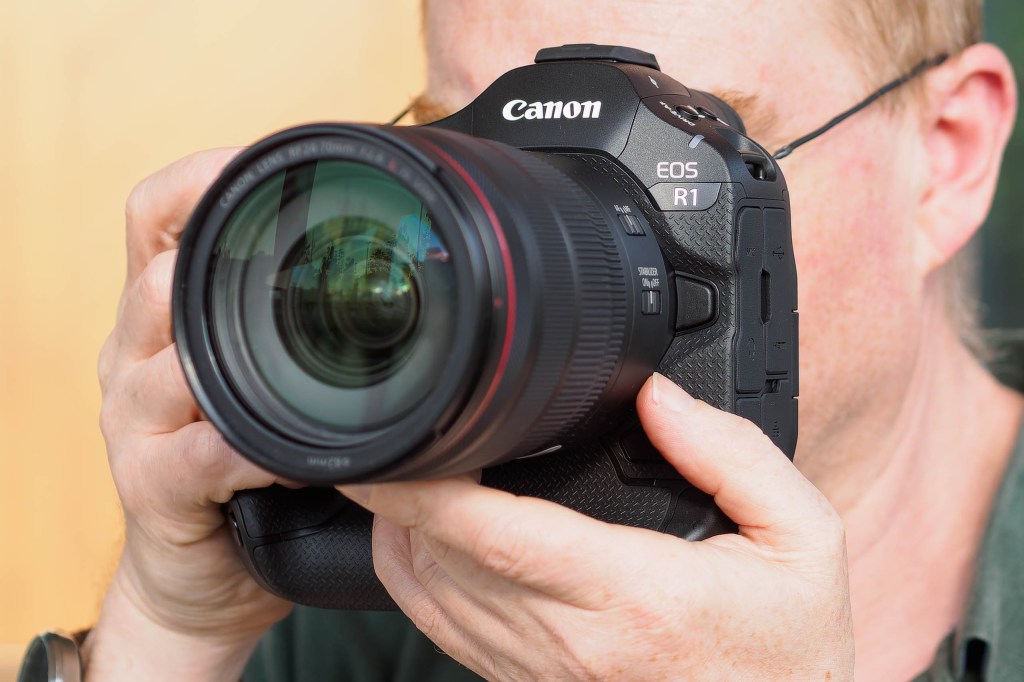
Amateur Photographer verdict
The next generation of sports cameras, the Canon EOS R1 is a truly groundbreaking speed machine, equipped with AI smarts and Eye Control focus. Of course, it’s priced at a level that excludes most.- Super-fast shooting
- Superb viewfinder
- Prodigious battery life
- Works seamlessly with EF-mount SLR lenses
- Overkill for most people
- Slightly compromised dynamic range
Specifications at a glance:
| Sensor | 24MP stacked CMOS sensor |
| Continuous shooting | 40fps with autofocus |
| Autofocus | 1,053 phase-detection AF points |
| ISO | ISO 100-102,400 (standard), ISO 50-409,600 (extended) |
| Image stabilisation | Up to 8.5 stops |
| Video | 6K Raw video |
Long-awaited, the Canon EOS R1 is an absolutely remarkable camera that has proven to be almost everything that professional sports photographers were hoping it would be. Built like a tank, it offers fantastic handling thanks to an abundance of physical buttons and controls.
The 1053-point autofocus system locks onto targets with incredible accuracy and persistence, and it benefits from an AI-powered subject-detection system that doesn’t overcomplicate things the way cameras from some other brands do. Shooting speeds go to a blistering 40fps when you’re using the electronic shutter, with full autofocus, and frankly, if you can’t get at least one keeper with all that at your disposal, the problem probably isn’t with the camera. And I haven’t even talked about the next-generation Action Priority mode, which uses AI smarts to keep the focal point on where the main action is in a busy scene (on the ball in a football game, for instance).
In-body image stabilisation also works well on the EOS R1, providing up to 8.5 stops of effective compensation. When reviewing the camera, our technical editor Andy Westlake was able to shoot using wide-angle lenses with shutter speeds as long as a second, and still obtain images of acceptable sharpness. Granted it’s rare you’d need to do such things in a sports or wildlife context, but it’s still a nice feature to have for general-purpose photography.
The raw image quality is also excellent – Andy put the camera through its paces in a variety of situations, and found that images were consistently sharp at the pixel level, with no visible artefacts. It’s probably the highest-quality 24MP camera you can buy – though as we’ve seen on this list, if you do want more pixels and more detail, you have no shortage of options.
All in all, the Canon EOS R1 is practically everything that professional sports photographers could want – which is exactly why most people probably shouldn’t buy it. Given the price tag and bulk of the EOS R1, it is simply going to be overkill for the vast majority of photographers. Still, if you are looking for the best full-frame camera for sports – this is it.
Best for: Professional wildlife and sports photographers
Read our Canon EOS R1 review
Best pro Sony camera
Best full frame mirrorless Sony camera for professionals: Sony A1 II
Amateur Photographer verdict
The Sony A1 II is a truly top-class professional all-rounder in both stills and video. However, its sky-high price means it’s only worth it if you’re already invested in the system.- The best Sony camera you can buy
- Superb viewfinder and screen
- Excellent AF with auto subject-detection
- Much more expensive than rivals
- Over-complicated autofocus setup
Specifications at a glance:
| Sensor | 50MP full frame stacked-CMOS sensor |
| Continuous shooting | 30fps |
| Autofocus | 759 AF points |
| ISO | ISO 100 – 32,000 (expandable to 50-102,400) |
| Image stabilisation | Up to 8.5 stops |
| Video | 8K 30p, 4K 120p |
The original Sony A1 was something of a game-changer – a true do-everything camera for the demanding professional, equally at home with capturing high-res imagery of fast-moving subjects as it was with producing sublime 8K video. The Sony A1 II is all that once again – it’s the best Sony camera ever made, a much more capable all-rounder than the sports-focused A9 III. Its blend of speed and resolution allows you to capture “exactly the moment you want with relative ease, and with lots of leeway for cropping,” as we said in our full review.
The A1 II has gained plenty of new features, taking cues from both the original A1 and the A9 III. It has Sony’s best-ever image stabilisation, rated for up to 8.5 stops of compensation, which our reviewer found could be used to get sharp results at shutter speeds as low as 2.5 seconds provided he had something to lean on. The body has been widened with a greatly improved handgrip, and the subject-recognition autofocus has finally gained an Auto option – though our reviewer did encounter a few false positives, including an incident where it mistook an oak tree for an insect.
Unfortunately, we do have to talk about the price. The Sony A1 II stands head and shoulders above its rivals in price, while less so by other measures. It costs almost 50% more than the Canon EOS R5 Mark II, and double the price of the Nikon Z8. Is it twice as good as the Nikon Z8? No, it is not! That makes it difficult to recommend for anyone who’s investing in a new professional system.
For established professional Sony photographers, truly committed to the system, having invested in G Master lenses and the like, then the Sony A1 II will do absolutely everything you need it to do extremely well. However, if you don’t fit that exact profile, then this is a tough camera to recommend, as you can spend a lot less in another system and get a camera that is just as excellent.
Best for: Professionals who use Sony gear
Read our Sony A1 II review
Frequently asked questions (FAQ)
How to choose the best full frame mirrorless camera
The term ‘full frame mirrorless’ refers to two things: sensor size and camera type. Full frame is a sensor size of 36x24mm; the same as a single frame of 35mm film, hence the name. It’s one of the larger sensor formats available and is popular among professionals for its balance of image quality and portability. See our piece on APS-C vs full frame sensor sizes for more on sensor sizes.
Mirrorless cameras, meanwhile, are interchangeable-lens cameras. They are the modern successor to the best DSLRs that were the professional standard digital camera throughout the 2000s and the 2010s. The key difference, if you hadn’t guessed, is the lack of a mirror – the reflex mirror system that is the lynchpin of a DSLR’s optical viewfinder. Instead, mirrorless cameras typically offer an Electronic Viewfinder (EVF); essentially a miniature LCD screen with an eyepiece.
Our DSLR vs mirrorless guide explains in detail the key differences between the two types of camera. Suffice to say that the dawn of the 2020s has seen mirrorless cameras become the professional standard, with all manufacturers except Pentax switching to the format.
This means mirrorless cameras are getting all the latest technological developments. These include powerful in-body stabilisation systems that make it easier to get sharp shots handheld. The more significant development, however, has been AI-powered subject-detection autofocus. This is a remarkable focusing system by which the camera is capable of recognising specific types of subjects such as humans, animals and vehicles, and can then lock onto and track them throughout the frame.
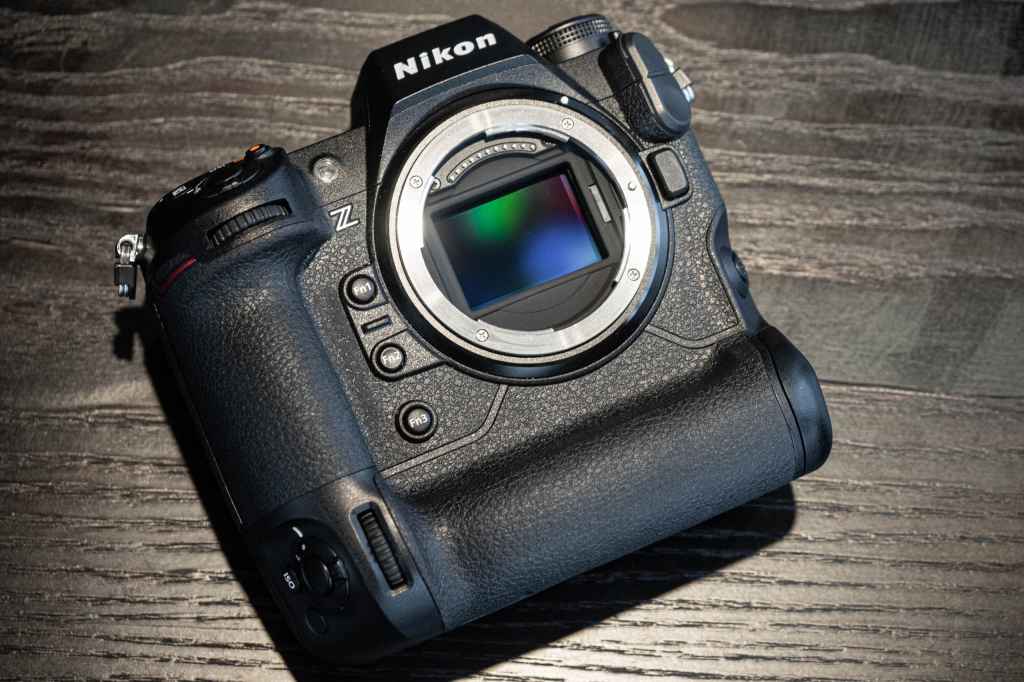
When buying a new full frame mirrorless camera, there are a few key specs to pay attention to:
Sensor resolution: The more pixels a sensor has, the more detail you get in your images. This is great for printing, enabling you to produce fantastic images full of rich detail. However, high-resolution files take up a lot of storage space, necessitating expensive hard drives or cloud subscriptions, and also require powerful processors, which means a slower, pricier camera.
Image stabilisation: IBIS (which stands for in-body image stabilisation) is a key feature to help you produce shake-free shots. Most modern mirrorless cameras now include this technology; it will often be referred to as ‘5-axis in-camera image stabilisation’ or something similar.
ISO range: A camera’s ISO range determines how high you can turn up the sensitivity of its sensor. The higher the top number in a camera’s ISO range, the better it can perform in low light. Be warned though, just because a camera can shoot at ISO 102,400, that doesn’t mean you’ll get useable results at that setting, as high ISO settings incur a lot of image noise.
LCD screen and viewfinder: Mirrorless cameras don’t have optical viewfinders like DSLRs, so they have to either make do with electronic ones, or forgo them entirely. All the cameras on this list have electronic viewfinders (EVFs), but some are larger and more detailed than others.
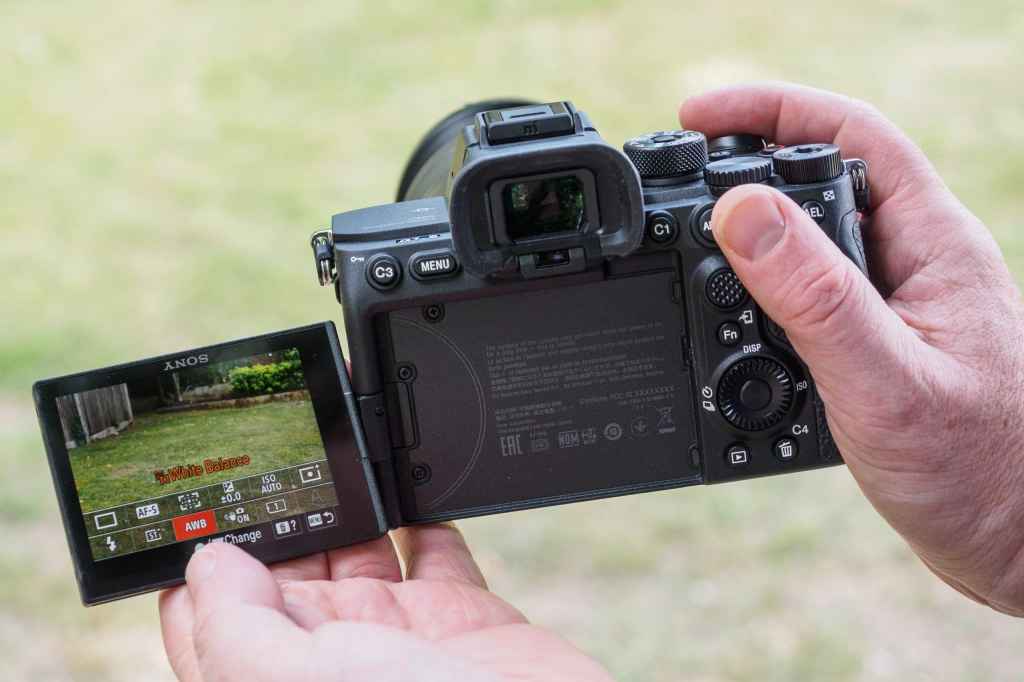
Burst mode: The faster the burst mode (expressed in frames per second or fps) on a camera, the better it will be at keeping up with fast action. You’ll also want to pay attention to the buffer depth, which is the number of consecutive images the camera can shoot before the processor needs to cool off.
Video: If video is a high priority on your list then you’ll want to find a camera that supports 4K video resolution or higher. 4K is plenty big enough to produce high end video footage, however some of the cameras in our line up support 8K resolution. For most, 8K video is excessively big, so 4K should be more than enough.
Lenses: Finally, think about lenses. Each manufacturer’s system is different. If you are switching from a DSLR system and want to keep some or all your old lenses you’ll need to purchase a compatible adapter mount to ensure they fit. Canon and Nikon offer full-functionality mount adapters that allow you to use DSLR lenses on their mirrorless cameras and still enjoy the benefits of autofocus and stabilisation.
Do professionals use DSLRs or mirrorless cameras?
These days, most professional photographers use mirrorless cameras — though it’s not completely clear-cut. While DSLRs were once the kings of the photographic world, times have changed, and now the superior speeds and resolutions of the latest mirrorless cameras have seen the many professionals jumping ship. It helps also that most major manufacturers have firmly moved their development over to their mirrorless ranges, and so pretty much any professional camera or lens that comes out nowadays is going to be mirrorless.
So are DSLRs dead and buried? Many photographers prefer them for their long battery life and ability to field an optical viewfinder. It’s quite common for professionals who’ve upgraded to mirrorless to still keep their DSLRs on hand, allowing them to still take advantage of features or lenses they like from the older system. Overall though, professional photographers are trending mirrorless, and this is only going to increase as the years go on.
Is DSLR focusing better than mirrorless?
Autofocusing works quite differently on DSLRs and mirrorless cameras. While DSLRs have certain advantages, it isn’t true to say that focusing is better on a DSLR than it is on a mirrorless cameras. DSLRs have a specialist autofocus sensor unit, which can calculate and extrapolate subject movement based on location (relative to the array of focus points) and distance. Mirrorless cameras, meanwhile, have more focus points, which enables a better estimate of subject position, but doesn’t calculate precise subject distance in the same way.
They do have some considerable compensation, however, in the form of the powerful Subject Recognition systems that are becoming more and more common, allowing cameras to intelligently identify and lock onto specific subjects like humans, animals and vehicles (some can even use this in conjunction with face-detection to lock onto specific individuals). For more on the key differences, check out our in-depth rundown — Autofocus: DSLR vs Mirrorless.
How we test full frame mirrorless cameras
Testing mirrorless cameras isn’t just about lab charts and specs — it’s about seeing how they perform in the real world. Each model is put through its paces with hundreds of photos and video clips shot in a wide variety of conditions.
As full-frame mirrorless cameras are often larger and heavier, we examine their control layout, whether they have an adequate grip and how well they handle overall.
We take a look a screen size and brightness as well as response time in case of touchscreens and the practicality of any articulating design. We test the electronic viewfinder with particular attention to brightness, colour accuracy and real-time exposure preview.
Autofocus performance is one of the key areas of testing. Continuous subject tracking, or special features like the superb Eye Control in the Canon Eos R5 Mark II or other advanced Subject Detection modes are all evaluated, whether capturing fast-moving action or more composed scenes.
Many models boast high fps continuous shooting capabilities and features like AI-assisted focus tracking. To test these features, we use fast-moving subjects to reveal how well the system holds focus and how many frames truly hit the mark. We also assess their image stabilisation system and test how well they counter rolling shutter effects. Blackout-free shooting, buffer depth, and overall responsiveness at high speeds are also measured to see how each camera handles high burst rates.
Last but by no means least, we critically evaluate image quality, in both JPEG and raw, including resolution, high-ISO noise, and dynamic range – as well as video capabilities.
We then take all these factors into account, along with such things as portability and lens systems, when giving our final conclusion and score. You’ll find the full breakdown of how each mirrorless camera has performed in our full reviews.
Recent updates:
- 2025 Oct: prices updated, no new cameras added.
Text by Claire Gillo, with contributions from Jon Stapley.
For more options, have a look at our latest mirrorless camera reviews, and our latest buying guides, including our guide to the best professional cameras.
Related articles:
- Best second-hand full-frame mirrorless cameras
- Best mirrorless cameras you can buy right now
- Best used mirrorless lenses under $2000/ £2000
- Why I switched to mirrorless- the move from DSLR
- Case study: no regrets on going mirrorless


